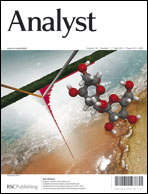The preparation, characterization and performance evaluation of an amperometric affinity disposable magnetosensor, based on the use of a recombinant penicillin-binding protein (PBP) and screen-printed carbon electrodes (SPCEs), for the specific detection and quantification of β-lactam antibiotic residues in milk are reported. The PBP was immobilized onto His-Tag-Isolation-modified magnetic beads (His-Tag-Isolation-MBs), and a direct competitive assay using a tracer with horseradish peroxidase (HRP) for the enzymatic labeling was performed. The amperometric response obtained at −0.20 V vs. the Ag pseudo-reference electrode of the SPCE after the addition of H2O2 in the presence of hydroquinone (HQ) was used as the transduction signal. The developed methodology showed very low detection limits (in the low ppb level) for the 6 antibiotics tested in untreated milk samples, and a good selectivity against other antibiotic residues frequently detected in milk and dairy products. Due to the bioreceptor employed, this methodology was able to detect only the active form of β-lactam antibiotics with high affinities for both penicillins and cephalosporins. Moreover, the analysis took only 30 min.

You have access to this article
 Please wait while we load your content...
Something went wrong. Try again?
Please wait while we load your content...
Something went wrong. Try again?


 Please wait while we load your content...
Please wait while we load your content...